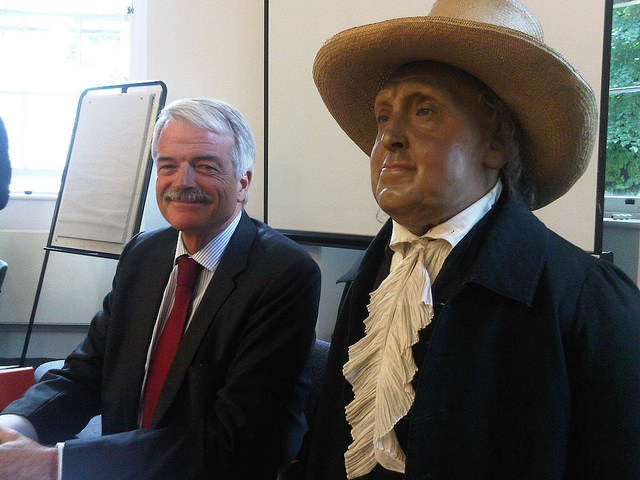The skeleton of jeremy bentham is present at all important meetings of the university of london

The Skeleton of Jeremy Bentham: University of London’s Unusual Attendee

At the heart of the University College London lies a rather unconventional attendee who has been a part of important meetings for almost two centuries. It’s none other than the skeleton of Jeremy Bentham—a prominent philosopher, social reformer, and the founder of utilitarianism. Bentham’s skeletal remains have become a symbol of enlightenment and intellectual pursuit within the University of London.
Jeremy Bentham, born in 1748, was a controversial figure during his time. He was known for his radical ideas and innovatively questioning the established norms of society. In his will, Bentham left specific instructions for his body to be preserved and displayed after his death, allowing it to continue participating in discussions and contributing to the advancement of knowledge.
The preservation process was carried out meticulously. Bentham’s body was dissected, and his skeleton was cleaned, articulated, and dressed in his own clothes. A wax head was also created to display an accurate likeness of Bentham, ensuring a realistic representation during meetings. This unique preservation technique, called “auto-icon,” was invented by Bentham’s friend and disciple, Dr. Thomas Southwood Smith.

The auto-icon of Jeremy Bentham found its permanent home at the University College London in 1850. Since then, it has become a significant part of the university’s culture and tradition. Accompanied by a recorded voice, the auto-icon is wheeled into important meetings, reminding attendees of the importance of critical thinking and intellectual curiosity. The presence of Bentham’s skeletal remains serves as a constant reminder of the university’s commitment to progressive ideas and the pursuit of knowledge.
Although the auto-icon may appear eerie to some, it has witnessed countless discussions and decisions that have shaped the university’s direction. Students and faculty members view the auto-icon not as a macabre artifact, but as a symbol of inspiration, pushing them to question norms and explore new ideas.
Bentham’s philosophy of utilitarianism also finds resonance within the university’s ethos. By emphasizing the greatest happiness for the greatest number of people, utilitarianism serves as a guiding principle for decision-making. The auto-icon’s presence further reinforces the importance of incorporating this philosophy within academia and broader society.
In conclusion, the auto-icon of Jeremy Bentham has become an iconic symbol at the University of London. By attending important meetings, the skeletal remains of this visionary philosopher continue to spur intellectual discussions and challenge conventional thinking. Bentham’s auto-icon serves as a reminder to all those who encounter it that knowledge should persist beyond the limitations of life.
Share
Related Posts
Quick Links
Legal Stuff

